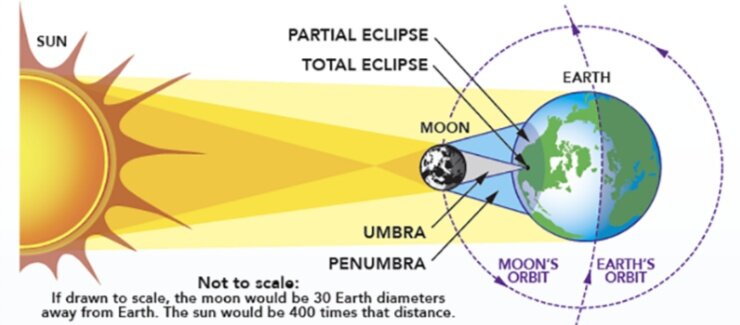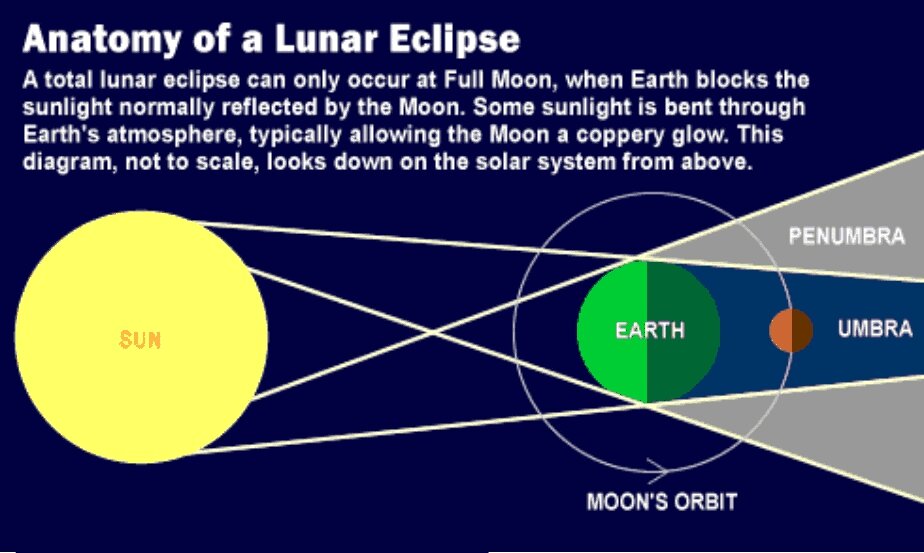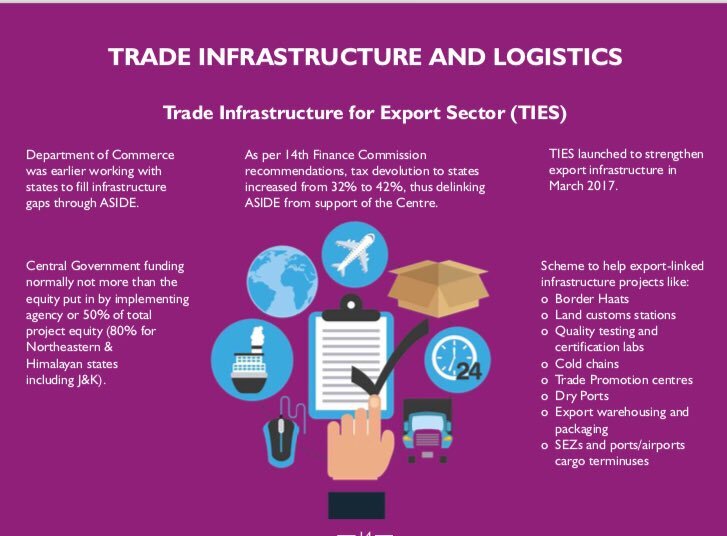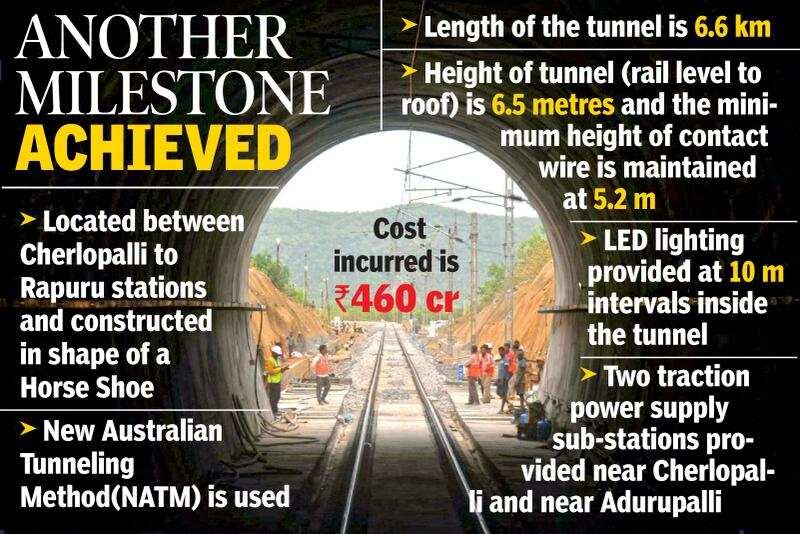Indian Economy
Working Group on Core Investment Companies
The Reserve Bank of India (RBI) has constituted a working group to review the regulatory guidelines and supervisory framework applicable for Core Investment Companies (CIC).
Background
- In August 2010, the Reserve Bank had introduced a separate framework for the regulation of systemically important Core Investment Companies (CICs).
- This was done because of the differences in the business model of a holding company relative to other non-banking financial companies.
- Over the years, corporate group structures have become more complex involving multiple layering and leveraging, which has led to greater inter-connectedness with the financial system through their access to public funds.
- Further, in light of recent developments, there is a need to strengthen the corporate governance framework of CICs.
Terms of Reference
- The Terms of Reference of the Working Group are:
- To examine the current regulatory framework for CICs in terms of adequacy, efficacy and effectiveness of every component thereof and suggest changes therein.
- To assess the appropriateness of and suggest changes to the current approach of the Reserve Bank of India towards registration of CICs including the practice of multiple CICs being allowed within a group.
- To suggest measures to strengthen corporate governance and disclosure requirements for CICs.
- To assess the adequacy of supervisory returns submitted by CICs and suggest changes therein.
- To suggest appropriate measures to enhance RBI’s off-site surveillance and on-site supervision over CICs.
- The working group, headed by Tapan Ray, shall submit its report by October 31, 2019.
Core Investment Company
- Core Investment Companies (CICs) are a specialized Non-Banking Financial Companies (NBFCs).
- They have asset size of Rs 100 crore and above.
- Their main business is acquisition of shares and securities with certain conditions.
- It holds not less than 90% of its net assets in the form of investment in equity shares, preference shares, bonds, debentures, debt or loans in group companies.
- Its investments in the equity shares (including instruments compulsorily convertible into equity shares within a period not exceeding 10 years from the date of issue) in group companies constitutes not less than 60% of its net assets as mentioned in clause (iii) above.
- It does not trade in its investments in shares, bonds, debentures, debt or loans in group companies except through block sale for the purpose of dilution or disinvestment.
- It does not carry on any other financial activity referred to in RBI Act, 1934 except investment in bank deposits, money market instruments, government securities, loans to and investments in debt issuances of group companies or guarantees issued on behalf of group companies.
- It accepts public funds.
Group Companies
Group companies are an arrangement involving two or more entities related to each other through any of the following relationships, viz.,Subsidiary, Joint venture, Associate, Promoter-promotee for listed companies, a related party, Common brand name, and investment in equity shares of 20% and above.
Social Justice
Disability and RTE: UNESCO Report
The The United Nations Educational, Scientific and Cultural Organization (UNESCO) and the Tata Institute of Social Sciences have released a report titled 'State of the Education Report for India 2019: Children with Disabilities.
- The report states that in India, 75% of five-year-olds with disabilities and a quarter (more than one in four ) of children with disabilities ( in the age group of 5 to 19 years) do not attend any educational institution.
- The report is in synchronization with the Sustainable Development Goal-4 which aims to ensure "inclusive and equitable quality education” and promote lifelong learning opportunities for all.
Key Findings
- There are more than 78 lakh children with disabilities in India between 5-19 years.
- Only 61% of them were attending an educational institution.
- About 12% had dropped out, while 27% had never been to school at all.
- There are fewer girls with disabilities in schools than boys but when it comes to school enrollment , more girls with disabilities get left behind than boys.
- According to UNESCO, India is home to 8 million children with disabilities, and 45% of them fail to attain literacy. Globally 15% of people are disabled.
- There are also differences among various types of disabilities like:
- 20% of children with visual and hearing impairments had never been in school.
- The percentage of children attending schools is the lowest among those with multiple disabilities, mental illnesses, and mental retardation. (more than 50% do not attend schoo).
- A large number of children with disabilities do not go to regular schools but are enrolled at the National Institute of Open Schooling (NIOS).
- enrolment figures at NIOS shows a decline for most categories of disabilities between 2009 and 2015.
National Institute of Open Schooling
- NIOS is "Open School" to cater to the needs of a heterogeneous group of learners up to pre-degree level.
- It was started as a project by the Central Board of Secondary Education (CBSE).
- The National Policy on Education suggested strengthening of Open School System for extending open learning facilities at secondary level all over the country as an independent system with its own curriculum and examination leading to certification.
Challenges
- The Right to Education Act mandates enrolment, but not the provision of resources needed for the actual education of a child with disabilities.
- In many parts of rural India, if a parent opts for home-based education, the child may not be getting an education at all.
- Laws relating to right to education and disabilities have certain ambiguities in terms of:
- Where children with disabilities should study.
- Who should teach them.
- Gaps in terms of appropriate norms and standards applicable to all educational institutions.
- lack of accessible physical infrastructure, assistive technologies, information and communication technology, and devices aggravates the situation of school dropout among disabled children.
- Inadequate allocations, delays in releasing funds and under-utilization of allocation are key challenges in financing education for children with disabilities.
Recommendations
- Amendments to the Right of Children to Free and Compulsory Education Act (RTE), so that it can be aligned with the Rights of Persons with Disabilities Act, 2016.
- Need for structural, funding and attitudinal changes to ensure that no child is left out of the right to education.
- There should be concentrated campaigns and large scale awareness drives which can improve the attitude towards children with disabilities in the classroom and beyond.
- Transformation of teaching practices is the need of the hour to aid the inclusion of diverse learners.
- Establish a coordinating mechanism under the Ministry of Human Resource Development for effective convergence of all education programs of children with disabilities,
Geography
Total Solar Eclipse 2019
A Total Solar Eclipse was witnessed in the region of the South Pacific and parts of South America (Mainly Chile and Argentina)
- This was the only Total Solar Eclipse of 2019.
- The astonishing thing about this Total eclipse was that it was viewed from the world’s clearest skies (Atacama desert).
- The Total Solar Eclipse was not visible in India,
Solar and Lunar Eclipse
- Eclipses are divided into two major types: Solar and Lunar.
- Solar eclipses occur when the Sun, Moon and earth all fall in the same line so that the Moon passes between Earth and the Sun, leaving a moving region of shadow on Earth’s surface.
- Lunar eclipses occur when the Sun, Moon and earth all fall in the same line and Earth passes between the Sun and the Moon, casting a shadow on the Moon.
- Eclipses may be classified into 4 types i.e. Annular, Total, Partial and Hybrid
- The type of eclipse we experience depends on the type of shadow that is involved.
- Both the Moon and Earth cast 3 shadows: umbra, penumbra, and an antumbra.
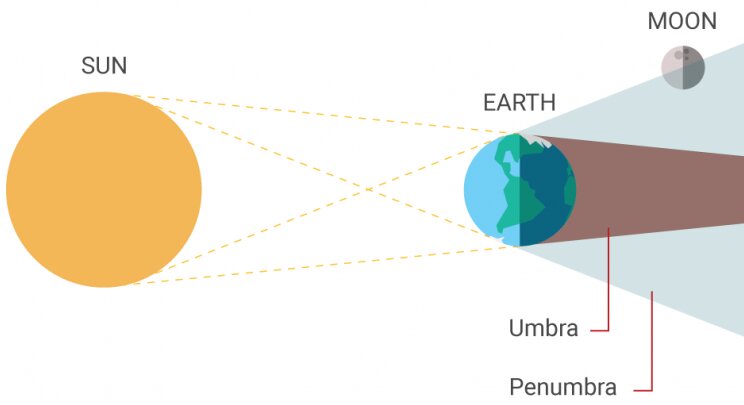
- The umbra is a shadow's dark core: It means If you are standing within the umbra, you will not be able to see any part of the light source as the object blocks all direct light rays.
- The penumbra is a half-shadow that occurs when a light source is only partly covered by an object
- Antumbra – the lighter part of the shadow that begins where the umbra ends.
- Both the Moon and Earth cast 3 shadows: umbra, penumbra, and an antumbra.
- In Total or annular solar eclipse: The Moon completely covers the Sun completely but whether an eclipse is total or annular depends on the distance between these three objects(Sun, Moon and Earth)
- Earth travels in an elliptical orbit around the Sun, and the Moon travels in an elliptical orbit around Earth, so the distance between these celestial bodies changes.
- Annular solar eclipse:
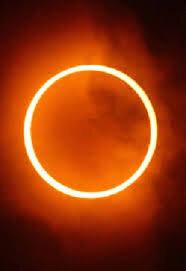
- When the Sun is nearest to Earth and the Moon is at or near its greatest distance, the Moon appears smaller than the Sun in the sky. When an eclipse of the Sun happens in this situation, the Moon will not appear large enough to cover the disk of the Sun completely, and a rim or ring of light will remain visible in the sky.
- Total solar eclipse:
- Total solar eclipses occur when the New Moon comes between the Sun and Earth and casts the darkest part of its shadow, the umbra, on Earth. A full solar eclipse, known as totality, is almost as dark as night.
- During a total eclipse of the Sun, the Moon covers the entire disk of the Sun. In partial and annular solar eclipses, the Moon blocks only part of the Sun.
- When Moon completely covers the disk of the Sun, only the Sun's corona is visible.
- It is called Total eclipse because at the maximum point of the eclipse( midpoint of time of totality), the sky goes dark and temperatures can fall.
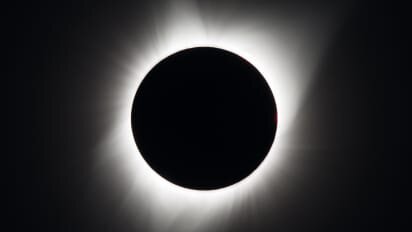
- The reason why solar eclipses are so rare is that the Moon's umbra rarely hits the Earth's surface. Even during a total solar eclipse, the umbra only covers a small area on earth(path of totality)
- That's why viewing a solar eclipse often depends upon where the viewer observes the event. A partial eclipse may be seen by viewers who stand outside of the region of shadow created by the umbra—the path of totality—but who remain within the large region of shadow covered by the penumbra, a region of lesser shadow where some light still penetrates.
- Hybrid Eclipse :
- A hybrid eclipse is a rare type of solar eclipse that changes its appearance as the Moon's shadow moves across the Earth's surface.
- A hybrid eclipse is a type of solar eclipse that looks like an annular solar eclipse or a total solar eclipse, depending on the observer's location along the central eclipse path.
- During a hybrid solar eclipse, the Earth's curvature brings some sections of the eclipse path into the Moon's umbra, the darkest part of its shadow that creates total solar eclipses, while other areas remain outside the umbra's reach, causing an annular eclipse.
- Both solar and lunar eclipses may also occur as Partial Eclipses.
- A partial eclipse of the Sun also results when the Moon’s penumbra falls on Earth but its umbra does not.
- A partial eclipse of the Moon occurs when the Moon passes through only part of Earth’s umbra or only its penumbra.
- The Moon does experience total eclipses. If the eclipse is a total lunar eclipse, the Moon will pass through the umbra (area of total shadow) created by Earth over the course of about two hours.
- There are no Annular lunar eclipse because the Earth is much bigger than the Moon, and its shadow will never be small enough to leave a ring.
- Since Moon is much smaller than Earth, there is no path of totality in a lunar eclipse. The eclipse will be visible to any observer on the night side of Earth when the eclipse occurs.
- During lunar eclipse, Moon does not typically go completely dark; it often takes on a red color, because the redder parts of sunlight that penetrate Earth’s atmosphere are refracted into the umbra, and this light reaches the Moon.
Science & Technology
Ascent Abort Test-2
NASA has carried out a successful test of a Launch-Abort System (LAS) for the Orion capsule designed to take U.S. astronauts to the Moon.
- The test of the Orion’s LAS is also called the Ascent Abort Test-2 (AA-2).
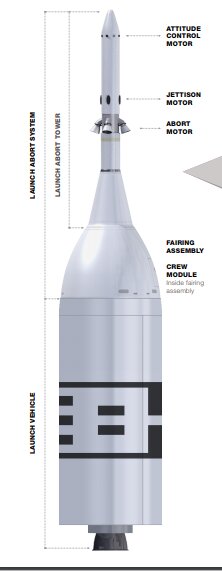
- The aim was to test in almost real-life conditions the evacuation of astronauts from the capsule in the event of an explosion or rocket booster failure.
- The test is a milestone in NASA's preparation for Artemis missions to the Moon that will ultimately lead to astronaut missions to Mars.
- The Artemis program will send the first woman and the next man to the Moon by the year 2024 and develop a sustainable human presence on the Moon by the year 2028.
Orion Capsule
- The safest spacecraft ever built, Orion, will execute the Artemis program.
- An integral part of ensuring safe spaceflight is Orion’s Launch Abort System, or LAS. This state-of-the-art crew escape system is attached to the top of the spacecraft and can propel the crew module away from the rocket within milliseconds should a life-threatening event arise during launch.
Demonstration by the test
- In the test, an unmanned Orion capsule was launched by a mini-rocket.
- Fifty-five seconds after the launch, at an altitude of 9,500 m, a rocket-powered tower on top of the crew module ignited its engines to quickly pull the Orion away from a hypothetical rocket experiencing problems.
- In just 15 seconds, the capsule gained two miles of altitude. Then the tower reoriented the capsule to prepare it for descent and disengagement from the tower, finally the crew module fell into the Atlantic Ocean.
- In real-life conditions, parachutes would also open to ease the manned capsule's fall toward the Atlantic Ocean.
Indian Economy
Trade Infrastructure for Export Scheme
The Department of Commerce, under the Union Ministry of Commerce and Industry, has approved financial assistance for three trade promotion centres under the TIES.
- The following are the approved projects with their implementing agencies:
- Establishment of Main Exhibition Building (Phase-II) at Trade cum Permanent Exhibition Centre at Imphal, Manipur by Manipur Industrial Development Corporation (MANIDCO).
- Expansion of Chennai Trade Centre by Tamil Nadu Trade Promotion Organisation
- Establishment of Trade Promotion Centre at Minto Hall, Bhopal by M.P. State Tourism Development Corporation
Trade Infrastructure for Export Scheme (TIES)
- Union Ministry of Commerce and Industry launched the Trade Infrastructure for Export Scheme (TIES) in March, 2017.
- After delinking of the Assistance to States for Development of Export Infrastructure and Allied Activities (ASIDE) Scheme in 2015, the State Governments had been consistently requesting the support of the Centre in creation of export infrastructure.
- The scheme would provide assistance for setting up and up-gradation of infrastructure projects with overwhelming export linkages like the Border Haats, Land customs stations, quality testing and certification labs, cold chains, trade promotion centres, dry ports, export warehousing and packaging, SEZs and ports/airports cargo terminuses.
- The Central and State Agencies, including Export Promotion Councils, Commodities Boards, SEZ Authorities and Apex Trade Bodies recognised under the EXIM policy of Government of India; are eligible for financial support under this scheme.
- The proposals of the implementing agencies for funding will be considered by an inter ministerial Empowered Committee.
- An Empowered Committee has to periodically review the progress of the approved projects in the Scheme and will take necessary steps to ensure achievement of the objectives of the Scheme.
- The Central Government funding will be in the form of grant-in-aid, normally not more than the equity being put in by the implementing agency or 50% of the total equity in the project.
- In case of projects located in North Eastern States and Himalayan States including J&K, this grant can be up to 80% of the total equity.
- The grant in aid shall, normally, be subject to a ceiling of Rs 20 Cr for each infrastructure project.
- In June, 2018, the Commerce Ministry approved 16 projects for export infrastructure under TIES
- The implementing agencies of these projects included Karnataka Fisheries Development Corporation Ltd; Visvesvaraya Trade Promotion Centre, Bengaluru; Cochin SEZ; Airport Authority of India, Coffee Board, Exports Inspection Council and Andhra Pradesh Med Tech Zone (AMTZ).
Indian Economy
J&K- First Investors’ Summit
The Government of J&K is organising the first ever investment summit in September-October 2019 in Jammu and Srinagar.
- It is aimed to attract investment and counter perceptions about the State.
- There is possibility of participation from at least eight countries besides the rest of India.
- The tourism, horticulture and handicrafts are the strong sectors where good investment is expected.
- The government is also focusing on power sector and manufacturing.
- J&K ranks third in the number of people in government jobs due to a lack of other avenues.
Investors' Concerns
- The image of the State as strife ridden has often come in the way of business and investment.
- The laws governing ownership of land do not allow non-State subjects (who are not permanent residents of Jammu and Kashmir) to purchase land or immoveable property in the State.
- However, the Land Grants Bill, passed by the government headed by late Shaikh Abdullah in 1978, allows the government to lease out land to outsiders for 99 years.
- The State government can designate lands as industrial and offer long term leases, but a suggestion that land outside of industrial parks could be given out on lease has met with stiff resistance from various quarters of civil society.
- Even a firm on leased land reduces its loan prospects because leased land cannot be mortgaged.
Governance
Adarsh Station Scheme
The Adarsh station scheme of Ministry of Railways aims to upgrade the suburban stations of India to Adarsh stations.
- Selection of railway stations under Adarsh Station scheme is based on the identified need for up-gradation of amenities.
Key features
- Adarsh stations will be beautified and upgraded with modern facilities like:
- Improvement of facade of the station building.
- Duly streamlining traffic flow
- Improvement of platform surface
- Improvement of existing waiting halls and retiring rooms
- Toilet facilities
- Provision of foot overbridges
- Provision of lifts and escalators etc.
- The upgradation process will be monitored by the Indian Government and Indian Railways.
Station Redevelopment Program: Apart from Adarsh station scheme of the Ministry of Railways, a separate policy has been made for the development of stations under Station Redevelopment Programme.
- Under station redevelopment program of Indian railways, IRSDC (Indian Railway Stations Development Corporation Limited) and other Government agencies are entrusted for undertaking the techno-economic feasibility based on which stations are planned to be taken up for redevelopment in phases especially the stations located in major cities, pilgrimage centres and important tourist destinations.
Agriculture
Global Sunflower Seed Meet
India will host the 3rd International Sunflower Seed and Oil Conference (ISSOC) 2019 on 19th–20th July in Mumbai.
- Organized by the International Sunflower Oil Association (ISOA), it will be hosted by the Solvent Extractors' Association of India (SEA).
International Sunflower Oil Association (ISOA)
- International Sunflower Oil Association (ISOA) was established in the year 2015 in Rome by National Associations and Companies from China, Ukraine, Russia, Hungary, Spain and Argentina.
- It aims to encourage and promote better communications among sunflower oil producers, industry groups, academic researchers and local governments, as well as enhancing sunflower oil value addition and enlarging the field of its commercial application.
- The first International Sunflower Oil Symposium and ISOA launching ceremony was held in October 2015, in Shanghai, China and the second conference was held in July 2017 in Odessa, Ukraine.
Sunflower Seed
- The sunflower seed is seen as a healthy table-seed and culinary seed having wide applications in a variety of food preparations including cakes and pastries.
- The global sunflower seed production in the year 2018-19 is estimated at 51.41 million tonnes, sunflower oil at 19.45 million tonnes & sunflower meal at 20.90 million tonnes.
- Leading producers of sunflower are Ukraine, Russia and Argentina, while countries like Belarus, France, Hungry, Romania, Kazakhstan, Turkey, Tanzania, China, India produce relatively smaller quantity.
- The leading importers of sunflower oil are India, China, Iran, Iraq, Egypt, Turkey & EU.
- The leading importers of sunflower meal are, China, Turkey, France, the Netherlands, Belarus, Spain, Poland, and India among others.
India’s Consumption of Sunflower Oil
- India is the largest importer of sunflower oil with imports of about 2.8 million tonnes.
- The global imports of sunflower oil is around 9.6 million tonnes. This shows the significance of India in the global sunflower seed and oil market as every producer or exporting country in the world looks to India for a market.
The Solvent Extractors' Association of India (SEA)
- The Solvent Extractors’ Association of India was formed in 1963 to help and foster the development and growth of Solvent Extraction Industry in India.
- At present the Association is having 875 members including about 350 working solvent extraction plants having combined oilcake/ oilseed processing annual capacity of about 30 million tonnes.
- The Association is an all India body to solvent extractions industry and premier vegetable oil association in the country having wide representative membership consisting of processors of Rice bran, Oilcakes, Minor Oilseeds and Soybean.
- It is financially autonomous and functions entirely as private sector body.
- It is the first Association in Vegetable Oil & Oilseed sector and may be one of the few Associations/Chambers in India to receive quality standard ISO 9001:2000 registration.
- It is recognised as a Non Government Organisation (NGO) by the Ministry of Agriculture, Government. of India .
- It is also a Trade Promotion Organisation (TPO) recognised by the Ministry of Commerce, Government of India.
- It is located in Mumbai.
Indian Economy
Longest Electrified Railway Tunnel
The South Central Railway (SCR) had commissioned the longest electrified tunnel of 6.6 km between Cherlopalli and Rapuru stations in the state of Andhra Pradesh.
- The tunnel is part of the recently completed Obulavaripalli-Venkatachalam new railway line.
- The new line also facilitates direct and viable connectivity between South Coast and West Coast.
- It also opens up the viable rail connectivity between Krishnapatnam Port and its hinterland for freight train services.
Important Facts For Prelims
Bangladesh Declares its Rivers Legal Persons
Bangladesh's High Court has granted the country's rivers the rights and status of "living entities" in a bid to save them from encroachment.
- The court has appointed the country's River Conservation Commission as the legal guardian of all waterways and directed other state agencies to fully assist it.
- Most of Bangladesh's rivers are branches and tributaries of two main Himalayan rivers — the Ganges and the Brahmaputra — which flow through Bangladesh before reaching the Bay of Bengal.
- The decision would save rivers from illegal encroachment in the densely populated country of 165 million people and where land is precious as gold.
- Many of the country's rivers are struggling due to illegal sand dredging and large-scale industrial pollution.
Important Facts For Prelims
Garuda VI
Indian Air Force (IAF) has participated in the 6th edition of bilateral exercise Garuda hosted by France.
- It is aimed at enhancing the interoperability level of French and Indian crews in air defence and ground attack missions.
- The Garuda exercise is alternately held in France and India, under the framework of bilateral cooperation between the two nations.
- Participation of IAF in the exercise will promote professional interaction, exchange experiences and operational knowledge besides strengthening bilateral relations with the French Air Force.

